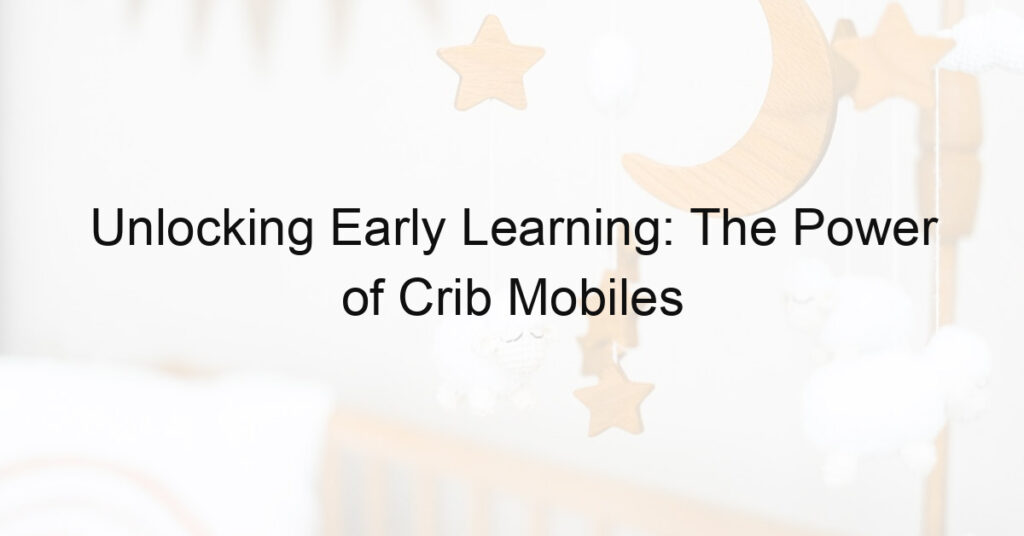
Introduction: The Importance of Baby Naps
Welcoming a new baby into your family is a joyous occasion filled with love and excitement. However, it also brings about a new set of responsibilities, one of which is understanding the importance of baby naps. In this article, we will delve into the significant role that naps play in a baby’s growth and development, as well as how they affect a baby’s mood and behavior.
- Understanding the role of naps in baby’s growth and development
- How napping affects baby’s mood and behavior
Napping is not just about giving parents a break. It plays a crucial role in a baby’s growth and development. According to pediatricians, during the first two years of a baby’s life, napping can account for about 30% of the total sleep. During this time, a hormone called Human Growth Hormone (HGH) is released, which is essential for growth. This hormone is primarily secreted during deep sleep, including nap times. Therefore, napping not only helps your baby grow physically but also aids in their brain development. It is during sleep that babies process and consolidate the new skills they learn when they are awake.
Just like adults, babies can become cranky and irritable when they don’t get enough sleep. Napping helps maintain a baby’s good mood and promotes better behavior. A well-rested baby is more likely to be happy, energetic, and eager to explore their surroundings. On the other hand, a tired baby may have trouble interacting with others and may struggle with learning new things. Therefore, ensuring your baby has regular, quality naps can contribute to a more positive mood and behavior.
In conclusion, understanding the importance of naps in a baby’s life is crucial for their growth, development, mood, and behavior. As a parent, it’s essential to ensure that your baby gets the right amount of sleep they need during the day. In the following sections, we will provide tips on setting up a baby sleep schedule, dealing with common nap challenges, and ensuring healthy baby sleep habits.
Baby Napping Tips: Setting Up a Baby Sleep Schedule
Understanding your baby’s sleep patterns is the first step in establishing a successful nap schedule. Let’s delve into the details.
Understanding Infant Sleep Patterns
Infant sleep patterns vary greatly, but there are some general guidelines to help you understand what to expect. Let’s explore these in detail.
- How often should a newborn sleep?
- Changes in sleep patterns as baby grows
Newborns sleep a lot, typically between 16 and 17 hours a day. However, this sleep is usually in 3 to 4-hour intervals. This is because their tiny stomachs need frequent refilling, day and night. As they grow, the total sleep time decreases, but the length of nighttime sleep increases.
As your baby grows, their sleep patterns will naturally change. By the time they’re 3 months old, many infants have a “sleep-wake” cycle like adults, sleeping more at night. By 6 months, many babies sleep at least 5 hours at a time. It’s important to remember that every baby is unique and may not follow these exact patterns.
Understanding these sleep patterns is crucial in setting up a successful baby sleep schedule. Remember, consistency is key. In the next section, we will discuss how to create a consistent baby nap routine.
Creating a Consistent Baby Nap Routine
Establishing a consistent nap routine for your baby is crucial for their development and overall well-being. Here are three key steps to ensure a successful nap routine:
- Setting a Regular Nap Time
Consistency is key when it comes to napping. Try to set a regular nap time that aligns with your baby’s natural sleep patterns. Most babies are ready for a nap about 2 hours after waking up. It might take some trial and error to find the perfect nap time, but once you do, stick to it. Regularity helps regulate your baby’s internal clock and makes it easier for them to fall asleep.
- Creating a Calming Pre-Nap Routine
Just like adults, babies benefit from a wind-down period before sleep. A calming pre-nap routine can signal to your baby that it’s time to sleep. This routine could include activities like reading a book, singing a lullaby, or giving a gentle massage. Keep the routine consistent and relatively short, around 10-15 minutes. This will help your baby associate these activities with sleep and make the transition to nap time smoother.
- Ensuring a Conducive Sleep Environment
Lastly, make sure your baby’s sleep environment is conducive to sleep. This means a quiet, dark, and cool room. Consider using a white noise machine to drown out any potential disturbances and blackout curtains to keep the room dark. Also, ensure the room temperature is comfortable – not too hot, not too cold. A good sleep environment can make a big difference in the quality and duration of your baby’s naps.
In conclusion, setting a regular nap time, creating a calming pre-nap routine, and ensuring a conducive sleep environment are three key steps to creating a consistent baby nap routine. Remember, every baby is unique and what works for one might not work for another. Be patient, flexible, and attentive to your baby’s needs and cues. Happy napping!
New Mom Advice: Dealing with Common Nap Challenges
As a new mom, it’s normal to face challenges when trying to get your baby to nap. However, with a few tips and tricks, you can navigate these hurdles and ensure your baby gets the rest they need.
Newborn Sleep Tips
Here are some strategies to help you deal with common nap challenges:
- What to do when baby won’t nap
- How to handle short naps
It can be frustrating when your baby refuses to nap, but remember, it’s normal for babies to have irregular sleep patterns. Try creating a calm and quiet environment for your baby. This could involve dimming the lights, playing soft music, or using a white noise machine. If your baby still refuses to nap, they might not be tired. In this case, try engaging them in a quiet activity until they show signs of sleepiness.
Short naps can be a sign that your baby isn’t getting into a deep sleep. To help lengthen their naps, ensure your baby is comfortable before putting them down. This might involve changing their diaper, feeding them, or burping them. If your baby continues to take short naps, it could be a sign of overstimulation. Try reducing noise and activity around your baby’s sleep area.
Remember, every baby is unique and what works for one might not work for another. It’s all about finding what works best for your baby and being patient as they adjust to their sleep schedule.
Baby Sleep Training Methods
As a new parent, you may find yourself facing the challenge of getting your baby to sleep. There are several methods to help train your baby to sleep. Let’s explore three popular ones:
- Gradual Retreat Method
- Ferber Method
- Pick Up, Put Down Method
This method is all about slowly reducing your presence in your baby’s room. You start by sitting next to your baby’s crib until they fall asleep. Each night, you move a little further away until you’re out of the room. This method can be effective, but it requires patience and consistency.
Developed by Dr. Richard Ferber, this method involves letting your baby self-soothe. You put your baby to bed awake and leave the room. If your baby cries, you wait for a predetermined amount of time before going in to comfort them. Each night, you increase the waiting time. This method can be challenging for parents who find it hard to listen to their baby cry, but it can be effective in teaching your baby to self-soothe.
This method involves picking up your baby when they cry and putting them down as soon as they stop. The idea is to reassure your baby that you’re there, but also to teach them that they can fall asleep on their own. This method can be tiring, but it can be effective if used consistently.
Remember, every baby is different, and what works for one may not work for another. It’s important to choose a method that feels right for you and your baby. And remember, consistency is key. With patience and persistence, your baby will learn to sleep through the night.
Parenting Tips for New Moms: Ensuring Healthy Baby Sleep Habits
As a new mom, one of the most important things you can do for your baby is to help them develop healthy sleep habits. This includes understanding and following baby nap guidelines. Let’s delve into the specifics.
Baby Nap Guidelines
When it comes to baby naps, there are two key factors to consider: the length of the nap and the transition from multiple naps to one nap.
- How long should baby naps be?
- When to transition from multiple naps to one nap
The length of a baby’s nap can vary depending on their age. Newborns may sleep for short periods of 2-3 hours throughout the day and night. As they grow older, around 4-6 months, they start to develop a more regular sleep pattern, with longer naps of 1-2 hours, 2-3 times a day. Remember, every baby is different and these are just guidelines. It’s important to pay attention to your baby’s individual sleep needs.
As your baby grows, they will gradually need fewer naps. Most babies transition from two naps to one nap a day around 12-18 months. This transition should be gradual and based on your baby’s cues. If your baby is having trouble staying awake between naps or is having difficulty sleeping at night, it might be time to consider transitioning to one nap a day.
Ensuring your baby has healthy sleep habits is a key part of their development and well-being. As a new mom, it’s important to be patient, flexible, and consistent. Remember, every baby is different and what works for one might not work for another. The most important thing is to pay attention to your baby’s needs and adjust accordingly.
Key Takeaways for Mastering Baby Naps
As we delve into the world of baby naps, there are three fundamental principles that every new mom should keep in mind. These principles will guide you in ensuring your baby has healthy sleep habits.
- Consistency is key
- Be patient and flexible
- Every baby is different
Consistency is the cornerstone of establishing good sleep habits for your baby. It’s important to maintain a regular nap schedule. This doesn’t mean you need to watch the clock obsessively, but try to put your baby down for their naps at the same time each day. This consistency helps regulate your baby’s internal clock and makes it easier for them to fall asleep.
Patience and flexibility are crucial when dealing with baby naps. Some days, your baby might not stick to the schedule, and that’s okay. It’s important to remember that every day is different, and flexibility is key. If your baby isn’t ready to nap at the scheduled time, don’t force it. Instead, try again later. Remember, patience is a virtue, especially in parenthood.
Lastly, it’s essential to remember that every baby is different. What works for one baby might not work for another. Some babies need more sleep than others. Some can handle longer awake times, while others can’t. It’s important to pay attention to your baby’s unique needs and adjust your approach accordingly. Don’t compare your baby’s sleep habits to others. Instead, focus on what’s best for your baby.
Mastering baby naps can be a challenging journey, but with consistency, patience, flexibility, and an understanding that every baby is unique, you can navigate this journey successfully. Remember, you’re doing a great job, and every step you take is helping your baby develop healthy sleep habits.
Case Studies: Real-Life Experiences with Baby Napping
Let’s delve into some real-life experiences of parents who have successfully navigated the challenges of baby napping. These case studies will provide you with practical insights and strategies that you can apply in your own journey.
-
Case Study 1: Establishing a Nap Routine in a Newborn
Meet Sarah, a first-time mom who was struggling to establish a nap routine for her newborn, Emily. Sarah was aware of the importance of sleep for Emily’s growth and development, but she found it challenging to get Emily to nap at the right times.
After trying different strategies, Sarah found success in creating a consistent sleep environment. She made sure Emily’s room was quiet, dark, and at a comfortable temperature. She also introduced a pre-nap routine that included a feeding, a diaper change, and a lullaby. Within a few weeks, Emily started showing signs of recognizing this routine and began falling asleep more easily.
Key takeaway: Establishing a consistent sleep environment and pre-nap routine can help a newborn adjust to a nap schedule.
-
Case Study 2: Transitioning from Multiple Naps to One Nap
Next, we have John and Lisa, parents of two-year-old Max. As Max grew older, he started resisting his afternoon nap, leading to crankiness in the evening. John and Lisa knew it was time to transition Max from two naps to one but were unsure how to do it.
They started by gradually pushing back the morning nap time, making it closer to the middle of the day. They also ensured Max was engaged in quiet, calming activities before his nap time. This helped Max make a smooth transition to one nap a day, and he was less cranky in the evenings.
Key takeaway: Gradually adjusting the nap time and engaging your child in quiet activities before nap time can ease the transition from multiple naps to one.
These case studies highlight the importance of patience, consistency, and a tailored approach when it comes to baby napping. Remember, every child is unique and what works for one may not work for another. Stay flexible, observe your child’s cues, and adjust your strategies accordingly.
Conclusion: Embracing the Journey of Parenthood
As we conclude, it’s essential to remember that being a parent, especially a new one, is a journey filled with ups and downs. It’s a path of discovery, growth, and immense love. One of the significant milestones in this journey is understanding and mastering your baby’s sleep patterns, particularly their napping habits.
- Reflecting on the importance of patience and understanding in mastering baby naps
- Encouragement for new moms navigating the world of baby sleep
Patience and understanding are two virtues that every parent must cultivate. When it comes to baby naps, these virtues become even more critical. Babies, especially newborns, have unpredictable sleep patterns. It can be frustrating when your baby won’t sleep or wakes up shortly after falling asleep. However, remember that your baby is just as new to this world as you are to parenthood. They are still figuring out their sleep cycle. So, be patient, understand their needs, and work towards creating a comfortable and conducive environment for their sleep.
To all the new moms out there, remember, you’re doing a great job! Navigating the world of baby sleep can be challenging and sometimes overwhelming. But, don’t be too hard on yourself. It’s okay to make mistakes and learn from them. It’s okay to ask for help when you need it. You are not alone in this journey. Every day is a new learning experience, and with time, you will understand your baby’s sleep patterns better. So, keep going, keep learning, and keep loving. You’re doing just fine!
In the end, remember that every baby is unique, and so is their sleep pattern. What works for one might not work for another. The key is to be patient, flexible, and open to learning and adapting. After all, parenthood is not just about raising a child, but also about growing and evolving as a person. So, embrace this journey with all its challenges and joys. It’s a journey well worth it!














